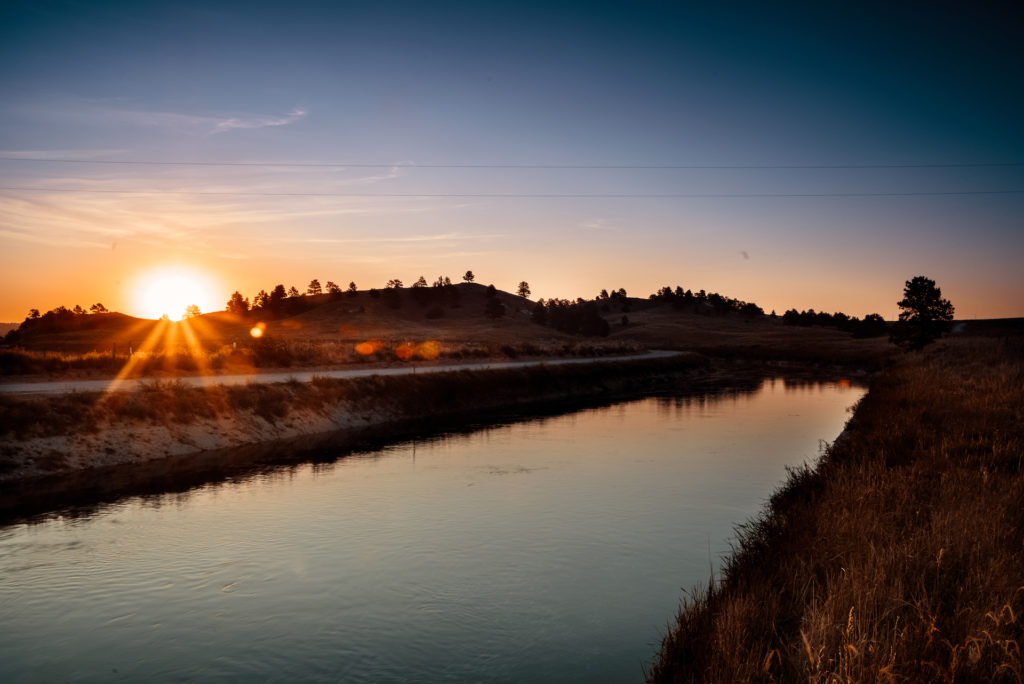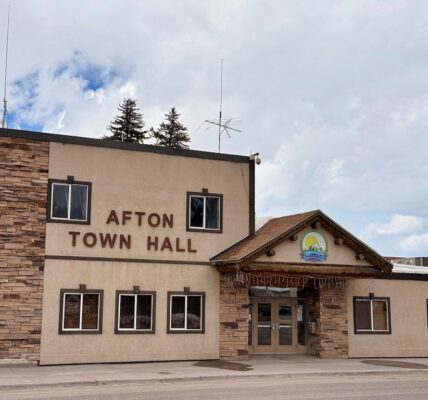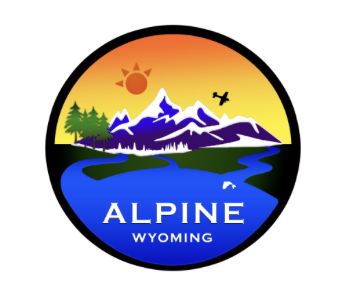By Tom Milstead
Torrington Telegram
Via- Wyoming News Exchange

TORRINGTON – Sometime between Wednesday morning and Thursday of last week, the water came back.
The Fort Laramie Irrigation Canal had set empty since July. The ditches were bone dry during the heat of the summer – but slowly, the water crept back where it belongs.
That’s because the Goshen Irrigation District, SAK Construction and dozens of others in the community worked together on a temporary fix for a tunnel that collapsed on July 17. The collapse caused the water to back up, it caused the canal to breach and it brought a sudden halt to irrigation this summer.
The SAK contractors installed heavy-duty steel ribs every four feet inside the tunnel to reinforce the walls and ceiling, but this is still just a temporary measure while a permanent fix is determined. During a GID stakeholders meeting earlier this month, GID board member Shawn Booth said the ribs have the potential to slow down the flow of water.
“Those ribs are going to grab that water,” he said. “There’s going to be a lot of drag going through that tunnel. How much will it slow it down? I have no idea.
“We’re going to look at all of the options for a long-term fix. We’re looking at the funding for that, too. We obviously can’t do it without that.”
Both GID staff and Gering-Fort Laramie Irrigation District Superintendent Rick Preston said the permanent repair could come in the form of a 13-foot diameter pipe that would sleeve the tunnel.
“The engineer anticipates they would be able to get about 1350 cfs through it,” Preston said earlier this month at a meeting for affected farmers in Nebraska. “The permanent fix is looking at a 13-foot diameter sleeve and we’re in the process of getting those numbers together as far as the amount of water it will carry. If it doesn’t carry what we want, we’d have to adjust something, whether it would be an additional pumping plant or an additional tube, or some type of major excavation through that half-mile of mountain to try to get that done.”
Booth said the cost of a 13-foot diameter pipe would be enormous. The pipe could cost up to $2,000 a foot, and it would cost some $4.4 million to sleeve the entire 2,200-foot tunnel. The pipe would have to be manufactured in Germany, and the shipping costs alone, he told the assembly, could be in the millions.
“We’re going to look at all of the options for a long-term fix,” he said. “We’re looking at the funding for that, too. We obviously can’t do it without that.”
While there is water in the canal, it’s going to be too late for producers to expect much from some of their key cash crops, however Dr. Xin Qiao, Irrigation and Water Management Specialist at the University of Nebraska Panhandle Research Center in Scottsbluff, said there may be some hope for a sugar beet harvest.
“They did have some rain, possibly over an inch depending on where they are, in western Nebraska, which I think could help the crop some, so my guess is the yield loss is going to be a little less,” he said. “Beets should retain more than 40 percent of average yield. It’s too late for corn.”
Qiao said farmers could take advantage of the water to help rebuild the moisture profile in their fields, but need to be careful not to overdo it.
“They can irrigate regardless of crop to build the profile,” he said. “However, with the stress that was undertaken, they are going to have more residual nitrogen left, and if irrigation is over applied, the residual nitrogen will be washed away. Unless they plan to grow any winter crop, for instance winter wheat, then it might be helpful to build the profile.”
The United States Department of Agriculture ruled in mid-August that crops lost because of the collapse are insurable, and producers should check with their crop insurance agents and Farm Service Agency officials before deciding how to proceed.






